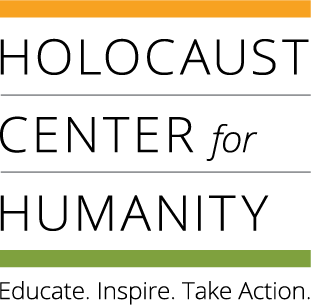
Image: Prisoners. From the Tuol Sleng Genocide Museum, former ly Pol Pot’s secret prison, codenamed “S-21.” Agron Dragaj Photography.
1. DEFINE GENOCIDE
The UN Convention on the Prevention and Punishment of the Crime of Genocide defines genocide as “any of the following acts committed with intent to destroy, in whole or in part, a national, ethnical, racial or religious group, as such:
1. Killing members of the group;
2. Causing serious bodily or mental harm to members of the group;
3. Deliberately inflicting on the group conditions of life calculated to bring about its physical destruction in whole or in part;
4. Imposing measures intended to prevent births within the group;
5. Forcibly transferring children of the group to another group.”
2. INVESTIGATE THE CONTEXT AND DYNAMICS THAT HAVE LED TO GENOCIDE
A study of genocide should consider what the steps toward genocide in a society have been or could be. Analyze the factors and patterns that may play a role in the early stages: political considerations, economic difficulties, local history and context, etc. How are targeted groups defined, dehumanized, marginalized , and/or segregated before mass killing begins? As students learn of the early phases of a genocide, ask them to consider how steps and causal conditions may have been deflected or minimized. Ask them to think about scope, intent, and tactics. Be mindful that there is no one set pattern or list of preliminary steps that always lead to mass murder.
3. BE WARY OF SIMPLISTIC PARALLELS TO OTHER GENOCIDES
Each genocide has its own unique characteristics of time, place, people, and methods. Students are likely to try to make facile comparisons to other genocides, particularly the Holocaust; however, it is up to the teacher to redirect students to the specifics of a particular community at a particular time and place. Some parallels do indeed exist between the Holocaust and other genocides: the use of trains to transport victims, camps for detention and killing, etc. However, genocide has also occurred without these two tactics. Thus, you could make careful comparisons between the tactics or procedures used by oppressors to destroy communities, but you should avoid comparing the pain and suffering of individuals.
4. ANALYZE AMERICAN AND WORLD RESPONSE
The world community is very different and far more complicated in the aftermath of the Holocaust. An important goal in studying all aspects of genocide is to learn from mistakes and apply these lessons to the future. To do this, students must strive to understand not only what was done, or not done, in the past but also why action was or was not taken. As with any historical event, it is important to present the facts. Students need to be aware of the various choices that the global community had available before, during, and after the mass killing. It is important to begin at home, with the choices available to the United States. It is also important to discuss all of the stakeholders involved—political leaders, religious leaders, and private citizens. Next, it is critical to discuss the range of choices seemingly available to the rest of the global community. How did international and regional authorities respond? What is the role of nongovernmental organizations? When is diplomacy, negotiation, isolation, or military involvement appropriate or effective?
Students may become frustrated when they learn of governmental inaction in the face of genocide. While there are certainly cynical reasons for not intervening, teachers can lead students to understand the complexity of responding to genocide—that it is usually not a simple matter to step into another country and tell one group to stop killing another group. In addressing what might cause genocide and how to prevent it, consider these questions:
- When does a nation (the United States, for example) have the political will to take all necessary steps to stop genocide?
- How much international cooperation can be mustered? How much is needed?
- What are the possible ramifications of intervention?
- Is a nation willing to absorb casualties and death to stop a genocide?
5. ILLUSTRATE POSITIVE ACTIONS TAKEN BY INDIVIDUALS AND NATIONS IN THE FACE OF GENOCIDE
One reason that genocide occurs is the complicity of bystanders within the nation and around the world. However, in each genocide, there have been individuals—both persons at risk inside the country as well as external observers or stakeholders—who have spoken out against the oppressive regime and/or rescued threatened people. There are always a few who stand up to face evil with tremendous acts of courage—and sometimes very small acts of courage, of no less importance. Teachers should discuss these responses without exaggerating their numbers or their frequency.
When teaching and learning about genocide, individuals may fall prey to helplessness or acceptance of inevitability because the event is imminent or in progress. The magnitude of the event and seeming inertia in the world community and its policymakers can be daunting, but actions of any size have potential impact. Numerous episodes from the Holocaust and other genocides illustrate this point.
Guidelines for teaching about genocide were created by the United States Holocaust Memorial Museum.
